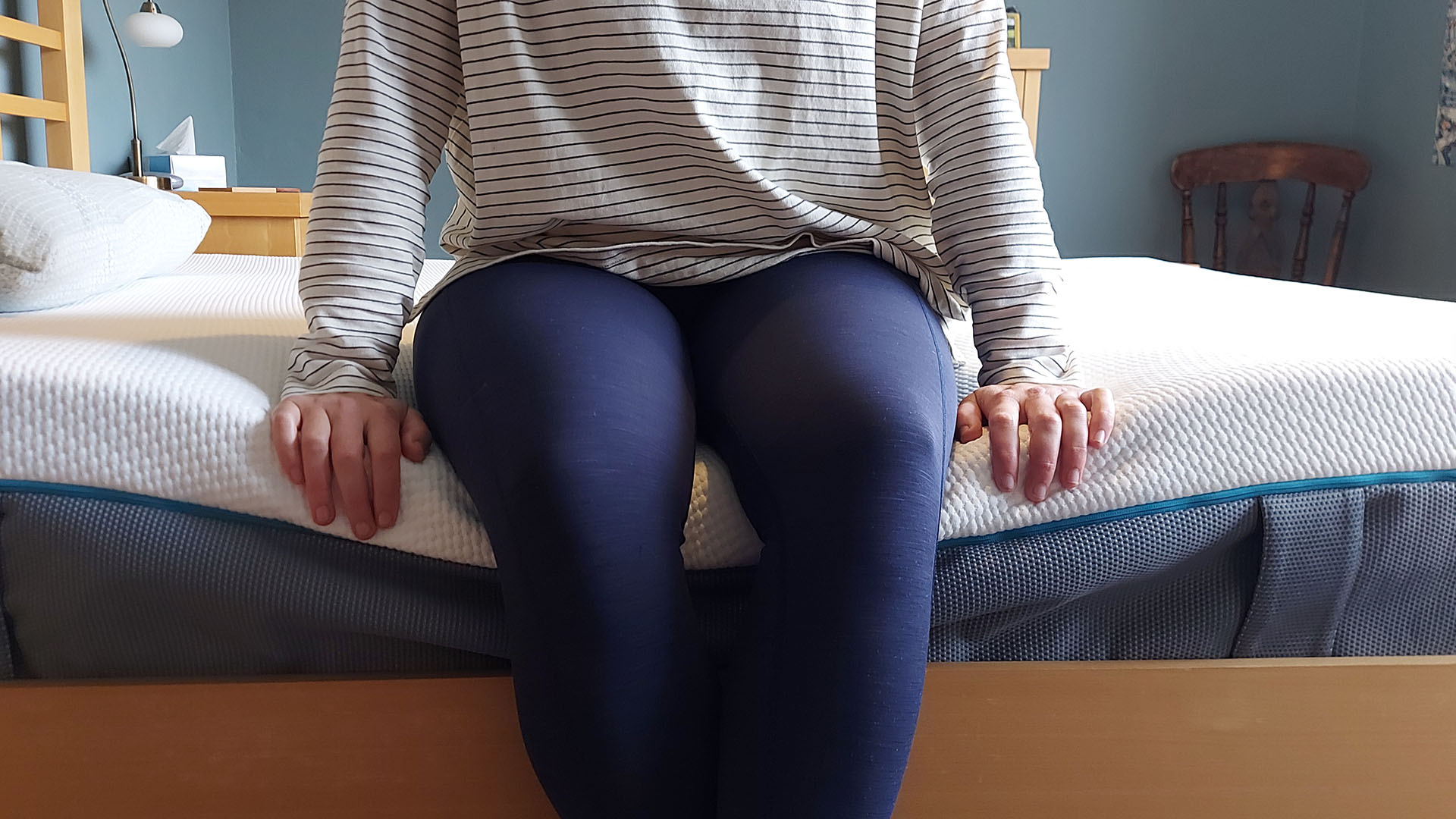
When choosing the best mattress, you have to consider every aspect of the bed, from the dead center to the tips of the corners. Because, let's face it, we rarely spend a full night lying curled up in the middle of the mattress. If you ever wake up clinging to the side of the bed, then you need to think about edge support.
Edge support refers to how supportive the mattress is around the perimeter. Mattresses with good edge support are sturdy at the corners and along the edges, while mattresses with poor edge support sink when you sit down.
In this guide, we'll help you understand what edge support means for your mattress, and why you should consider this feature when choosing a new bed. We'll also explore who can benefit the most from good edge support and what kind of mattress to look for if this is a priority.
What is edge support in a mattress?
Edge support describes how sturdy the perimeter of the mattress is and how much support it provides when weight is applied. A mattress with good edge support will remain stable when you sit on the edge of the bed, offering resistance to the pressure. However, if a mattress has poor edge support, you'll notice significant sagging when you put weight on the perimeter.
Good edge support is typically added to a mattress via reinforcements. For example, a mattress might have foam railings or stronger coils at the sides. These added features help stabilize the perimeter, so it's less liable to compress under pressure.

Edge support, alongside motion isolation and temperature regulation, is one of the three performance aspects we test in every mattress review. (We also test mattress toppers for the same three features.)
What type of mattress is best for edge support?
Innerspring and hybrid mattresses typically have the best edge support, while all-foam mattresses tend to be weaker at the perimeter. The best hybrid mattresses use reinforcements, like a lower gauge coil (i.e. thicker), to keep the edges strong. All-foam beds tend to be softer overall than coil beds, with potential for sagging at the edges. Even the best memory foam mattresses will often have average edge support.
While we tend to associate innerspring and hybrid mattresses with better edge support, that doesn't mean all hybrid mattresses automatically have strong edges. On the other hand, just because foam isn't known for its edge support, that doesn't mean some all-foam beds don't have sturdier perimeters – in our Siena memory foam mattress review, we gave the all-foam bed 5/5 for edge support. And in our Siena vs Allswell Hybrid mattress comparison, we determined it was the foam bed, not the hybrid, that had sturdier edges.
Can you add edge support to a mattress?
You could try adding a topper. This can transform the feel of your bed, making a mattress much firmer or much softer. However, even firm toppers will sag if the base they're put on isn't stable – even the best topper can't fix a sagging mattress. Your best bet for improving edge support would be to go for a topper that has more structure to it, such as the Saatva Micro-Coil mattress topper, but temper your expectations.

Edge support will inevitably start to deteriorate with regular use – as will all mattress support – but there are ways to slow the problem down. Avoid regularly sitting on the edge or corner of the bed, and when you do sit on the bed, try not to choose the same place each time. So, if, for example, you normally sit on the edge of the bed to dry your hair, try a new seating position every so often (and stand up from time to time).
How do you test for edge support?
To test edge support, first sit in the center of the mattress and then sit on the edge of the mattress. If the mattress feels stable no matter where you are on the bed, it has good edge support. If the center is stable but the edge is sagging, then the edge support is weaker. (And if it sags all over, your mattress probably isn't supporting you.)
Here at TechRadar, we have our own test for edge support. We place a weight on the edge of the mattress and measure how much it sinks. This is a good way to see how much the mattress sinks, and avoid letting bias make your judgement. (We also do it the old fashioned way – sleep on the mattress for several weeks, and see how it feels.)

Who can benefit from edge support?
A lot of mattresses have average edge support – there's a slight sagging, but you won't feel like you're rolling off the bed. For most people, this should be okay. However, there are some sleepers who can really benefit from choosing a mattress with stronger edge support:
1. You struggle to get out of bed
Choose a mattress with poor edge support, and you might feel like you're going to slide out of bed every morning. For many of us, this isn't a major issue. In fact, you might even like the minimum effort roll. However, if you struggle with mobility, a sloping edge can be tough to navigate. Extra support at the perimeter provides the stable base to push out of bed in the morning.
2. You share a bed
Lying directly in the center of the bed, you should feel your mattress is supporting you from head to toe. But what happens when you shuffle over to the edge? Do you feel yourself start to sink?

For bed sharers, a lack of edge support might mean you have less room on the mattress than you originally thought. Instead of using the full sleep surface, you have to huddle in the center or lose support. However, if you pick a mattress with good edge support, you and your partner will both have space. (And if you sleep alone, edge support means you can stretch out as much as you like.)
For a similar reason, beds with good edge support also tend to be the best mattresses for bigger bodies – there's more support across the bed.
3. You're waking up with aches and pains
If you frequently wake up aching and you also wake up clinging to the edge of the bed, you might need to upgrade your edge support. Your body needs support throughout the night, to keep your spine aligned and take the pressure off your joints. Sleeping on weak edges means your body doesn't have the stability it needs beneath it, causing you to twist into uncomfortable positions, resulting in pain the next day.
3 mattresses with strong edge support
All the mattresses below received 5/5 for edge support from our testers, making them a top choice for anyone who wants to avoid sagging corners.







